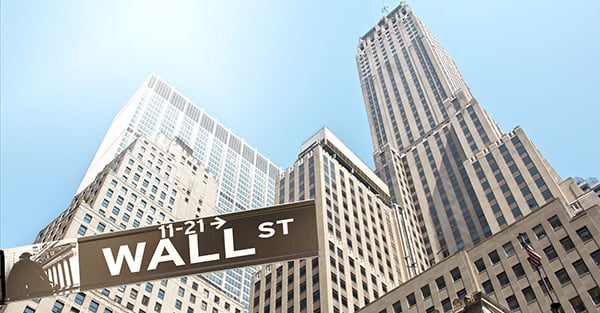As the temperatures go up in the summer months, so does the need for cooling and additional energy consumption to keep us comfortable, at home and at work. High-temp summers are often a time when energy bills skyrocket but efficiency measures can help reduce the impact on your budget.
Here are 4 energy saving tips on ways to stay cool and save money with energy efficiency top of mind.
Let there be energy-efficient light
Check your lights: are they up to date? A fun trick to see what kind of lights you have is to stand under the light bulb in question and look down at your smartphone screen (while it’s off) to see the reflection of the lightbulb. The reflected image on the phone screen will show either small square/round points of light (these are light-emitting diodes, also referred to as LEDs), or just one bright light spot from an incandescent light bulb or a fluorescent light bulb. If you don’t see diodes, consider investing in LEDs. There are many benefits to switching to LEDs. They cut lighting energy consumption by 60% to 70% and have the added benefit of emitting less heat, which can reduce the cooling load 15-30% – greatly lowering annual energy costs. Added bonus: LEDs last much longer than other light bulbs, which reduces long-term maintenance costs.
Do you have spaces lit 24/7, even when nobody is inside? Consider installing occupancy-based controls to automatically turn light fixtures off when the room is empty, saving energy when it is not needed. Wall-mounted occupancy sensors can cut your energy consumption by 20% to 30% (you do need a licensed electrician to do this). You may have noticed grocery stores and some big box chains implementing similar lighting in their refrigeration aisles: it just makes sense cents!
Can someone turn up the AC?
During the summer months, the first thing we often do is turn up the AC. But what if your HVAC equipment (e.g. HVAC units, chillers, etc.) is working harder than it needs to? It’s entirely possible that your equipment could be sluggish and drawing more energy than it should be. Without equipment-level data, this is hard to determine without conducting a mechanical audit. Still, maybe it’s time to check the age of the system and review the last maintenance report to see if it’s time to upgrade.
Also, did you know there is an upcoming ban on Freon (R-22), a non-flammable refrigerant gas that depletes the Earth’s protective ozone layer? Freon is used by AC units made prior to 2010. Check the year your AC unit was manufactured (found in the nameplate). Other signs of inefficiencies are condensation pools or ice around pipes. These definitely aren’t the kind of pools for swimming in. Keep an eye out for puddles near AC units, freezers and refrigerators: this could be a sign of more unnecessary wasted energy.
Lastly, don’t get burned by wasting heat and expensive kWh due to an uninsulated boiler. Visit the boiler room and check for insulation, which can cut energy use by up to 10% annually when installed correctly.
You’re as Cold as Ice and Why That’s a Good Thing (for Commercial Refrigerators)
Sweating is inevitable during summer, but make sure it’s not your fridge doing the sweating. Commercial refrigerators and freezers are critical for grocery stores and many other businesses. These appliances use a lot of energy, operating around the clock to keep perishable products cold. Typical commercial refrigerators consume up to 17,000 kilowatt-hours of electricity, while large commercial freezers consume up to 38,000 kilowatt-hours, resulting in high energy bills. Check for any leaks inside or around your refrigerator. If refrigerators are no longer working as efficiently as they once did, it not only means that you’re paying higher energy bills than necessary, but also that your products could be in danger of spoilage. And if there’s anything worse than overpaying on your energy bills, it’s lost inventory.
Here are some questions to ask yourself if you’re unsure:
- Is the refrigerator often breaking down or needing frequent recharges (refrigerant refills)?
- Are your perishable foods perishing a little too quickly?
- Does the unit feel too hot to the touch?
If the answer is “yes” to any of these questions, then it may be time to upgrade to a newer, energy-efficient appliance(s), especially if your current one is between 10 to 20 years old.
Reduce Your Commercial Energy Use
Do you think you might have any of the problems detailed above? If so, EnergyStar.gov notes on their building energy resources page that, “The average commercial building wastes 30 percent of the energy it consumes. That means that if you haven’t done anything to save energy, chances are, you’ll find many opportunities to improve. Start with no- and low-cost improvements, and then use savings to pay for more extensive upgrades.”
So, consider taking advantage of large scale energy efficiency retrofits like the ones provided by Redaptive! Through our EaaS (Efficiency-as-a-Service) model we’ve assisted a slew of customers including, AT&T, Bentley Mills, and Iron Mountain to upgrade their lighting, HVAC and more – to increase and meet their energy savings goals. Additionally, at Redaptive we’re always looking for new ways to help our customers save energy and reduce their carbon footprint so we’re always happy to look into your project.
With the heat of summer upon us, we hope your facilities stay cool! Hey ya!





